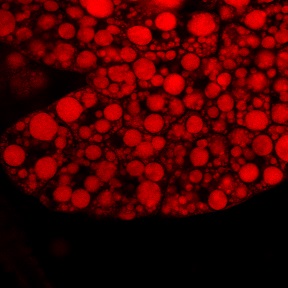Obesity and metabolic disease: in support of a maximum adipose expandability model
Laura Musselman
Department of Biological Sciences, Binghamton University, NY, USA
Overnutrition is a common health problem today and leads to various comorbidities including heart and liver disease, diabetes, compromised immune function, and immobility. We model these disease states in the fruit fly, Drosophila melanogaster, using a high-sugar (HS) diet. HS feeding leads to many of the same phenotypes in flies as in humans, including obesity, free fatty acid accumulation, hyperglycemia, insulin resistance, increased susceptibility to infection, and cardiovascular complications. Physicians have long considered obesity (an excess of stored triacylglycerides, or TAG) to be a cause of metabolic disease. However, it remains unclear whether stored TAG or another metabolite resulting from overnutrition is the true biochemical toxin. When challenged with a HS diet, genetically lean flies are sicker than controls, suggesting that another class of molecules, not TAG, is the culprit. We hypothesize that one or more lipid toxins or ‘lipotoxins’ accumulates during obesity-associated insulin resistance. By using tissue-specific loss-of-function to target lipid metabolism and the insulin signaling pathway in the HS-fed fat body, we have identified critical factors for the tolerance of overnutrition. Further characterization of these animals using mass spectrometry and other methods will, we hope, enable us to identify novel mediators of overnutrition-induced pathophysiology. By focusing on conserved pathways, our ultimate goal is to define interventions that help obese individuals survive the metabolic toxins that result from overeating.









You must be logged in to post a comment.